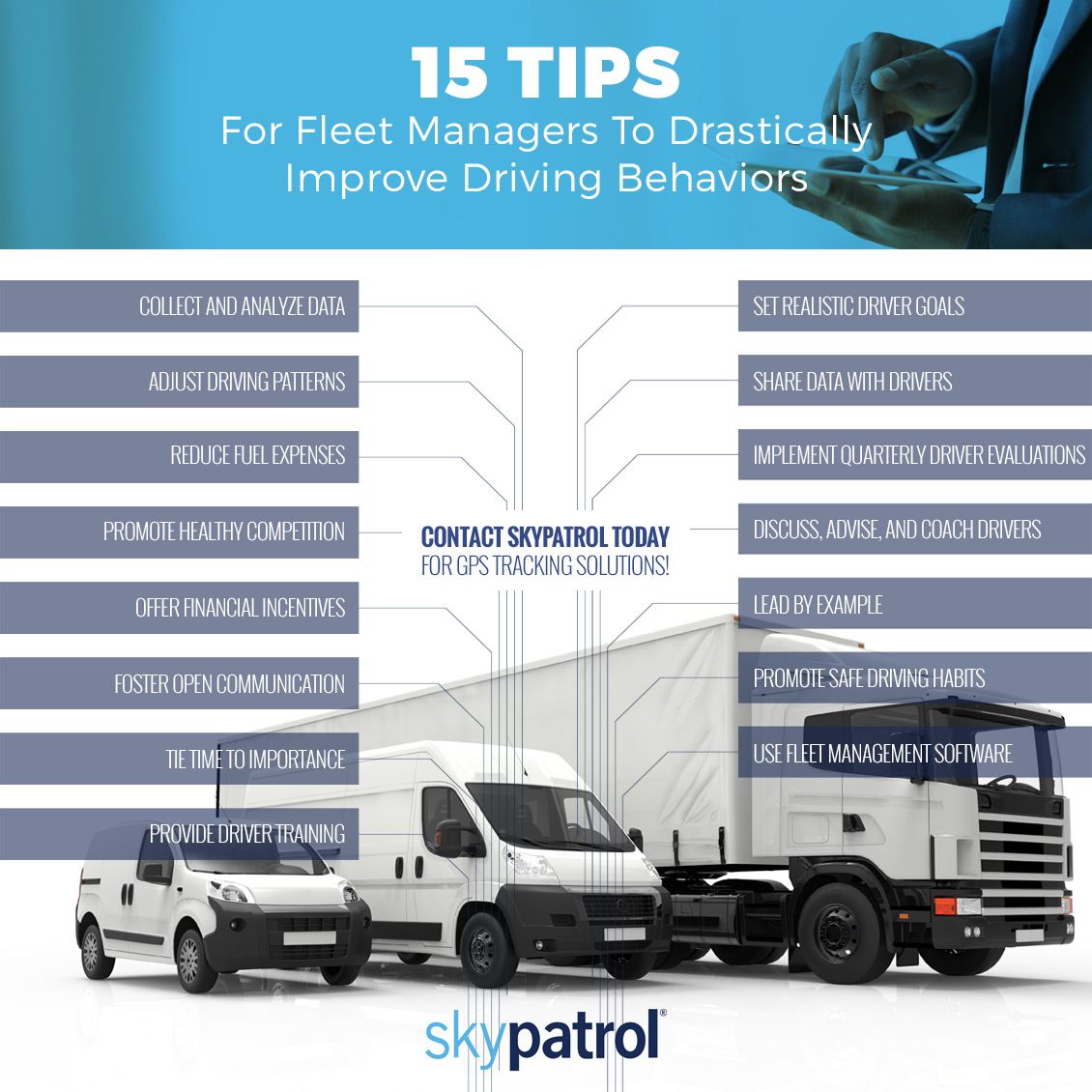It’s no secret that your drivers are the lifeline of the fleet. Without them, you wouldn’t have a fleet of operational vehicles. Managing an entire fleet is nothing short of overwhelming, but you can do it effectively and efficiently with fleet management software paired with GPS tracking devices. Nonetheless, here are 15 tips to consider to improve driver behavior:
Tip#1 – Collect and Analyze Data
With current technology, you are able to track your fleet down to the tenth of a mile. No longer are you in the dark while a vehicle is out making a delivery or pickup. Fleet management software allows you to always have a bird’s eye view of your fleet. This means that you’re able to collect data and analyze it for optimization or adjustments of daily operations.
Tip #2 – Adjust Driving Patterns
If you have a handful of drivers in your fleet participating in less than desirable driving behaviors, address them. With GPS tracking devices, you can monitor and track your entire fleet. Make sure they’re using optimal driving tactics to save you money while they operate.
Tip #3 – Reduce Fuel Expenses
Engine idle, routes, and aggressive driving all have an effect on how the fuel in the vehicle is used. Check in on all fuel factors to reduce the cost of fuel and increase the efficiency of use.
Tip #4 – Promote Healthy Competition
It’s amazing what numbers on a board can do to those who like to compete. Make a game out of fleet operations so that individual drivers can compete against one another. This will refresh commitment and inject a sense of pride back into their work.
Tip #5 – Offer Financial Incentives
Financial incentive paired with healthy intra-company competition will raise your overall morale and commitment. Furthermore, as your company is competing internally, it’s going to make them better than the other fleets in the industry as a result.
Tip #6 – Foster Open Communication
Encourage candid communication between colleagues, managers, and supervisors. Communication is key in any team endeavor. Your fleet will feel more comfortable suggesting possible ways to improve operations, and you’ll get to reap the rewards.
Tip #7 – Tie Time to Importance
Whether you’re in the medical industry, cab industry, or hauling industry, tie time to importance. If you can tie the ability to pick up, deliver, or otherwise to being an important metric, you will see a change in behavior to meet the standard.
Tip #8 – Provide Driver Training
It can be tempting to hope that your drivers understand how to operate the vehicle they have five, 10, or 15-plus years driving. However, it’s imperative you stress the importance of safe driving, too. Offer training, courses, and advancement in certifications to promote safe driving expectations.
Tip #9 – Set Realistic Driver Goals
Without a target, how will you know when your fleet succeeds? It’s important to set fleet and individual driver goals. Depending on your industry, you could set safe-driver, delivery, or other goals to give your drivers something to focus on achieving.
Tip #10 – Share Data with Drivers
If you notice an increase in fuel efficiency and a decrease in fuel cost, tell your drivers. The more you can tie their efforts to achievement and reward, the more they will work to perform at a higher level.



